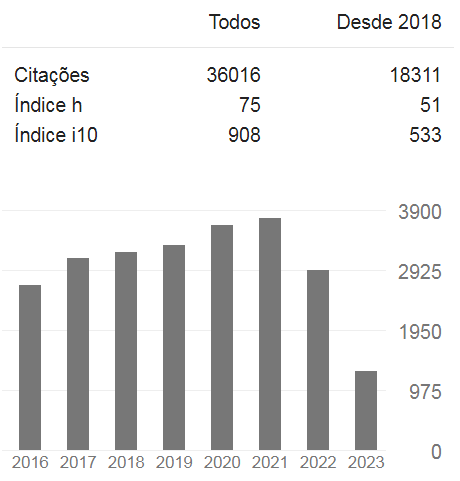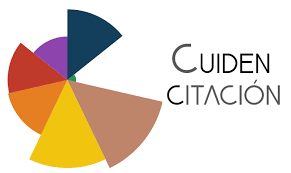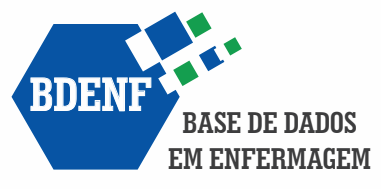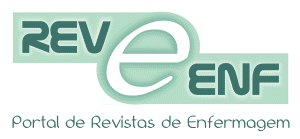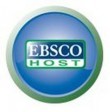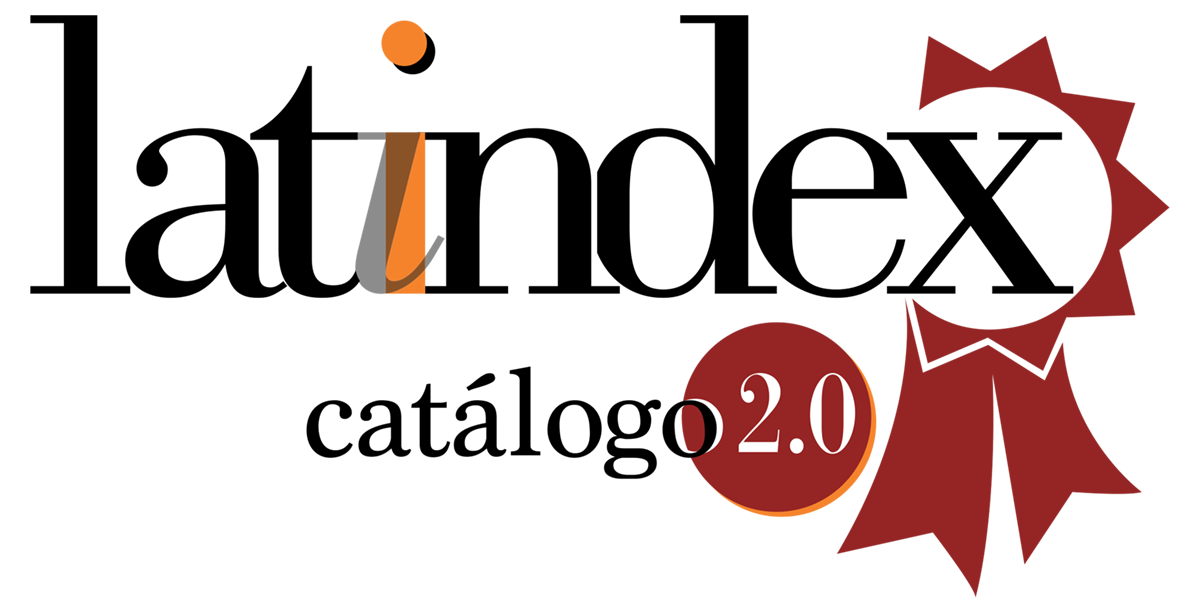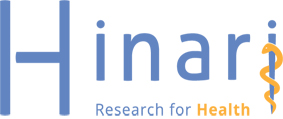Meanings assigned to dengue by primary health care nurses
DOI:
https://doi.org/10.5935/1415-2762.20190063Keywords:
Dengue, Public Health, Qualitative Research, Nurses, Psychology, SocialAbstract
Introduction: dengue remains an important public health problem and continues to
impact the population’s economic, social and health contexts. Objective: this study’s
objective was to identify the meanings of dengue from the perspective of primary health
care nurses from a town in the south of Minas Gerais, Brazil. Method: this qualitative
study is based on the Theory of Social Representations. The fieldwork included individual
interviews held with 17 nurses working in Unidades Básicas de Saúde (UBS) [Primary
Health Care Units] and Equipes da Estratégia Saúde na Família (ESF) [Family Health
Strategy] from a town in Minas Gerais, Brazil, between June and July 2015. The reports
were recorded, transcribed and later analyzed and presented using the Discourse of the
Collective Subject (DCS). Results: the following meanings regarding dengue emerged:
immense discomfort, public health problem, carelessness people, consequence of lack of
education, viral disease, concern and fear, severe disease, disease caused by a mosquito
bite, epidemics, and other meanings. The meaning that was most frequently reported
was dengue as a public health problem. Discussion: the symbolic and figurative results
reveal how polysemic and multifaceted the topic of dengue is. It was an important
opportunity for the collective subject, composed of Primary Health Care nurses, to
express and represent the meaning it assigns to dengue. Conclusion: identifying the
meanings health workers assign to dengue is important to understanding its causality
and combat it as a current public health/collective health problem.
References
World Health Organization. Sustaining the drive to overcome the global impact of neglected tropical diseases: second WHO report on neglected diseases. Geneva: WHO; 2013. 2014[citado em 2019 fev. 14]; 140 p. Disponível em: https://www.who.int/neglected_diseases/9789241564540/en/
Nelson R. Neglected tropical diseases take hold in the USA. Lancet Infect Dis. 2014[citado em 2019 fev. 14];14(11):1050-1. Disponível em: http://www.thelancet.com/journals/laninf/article/PIIS1473-3099(14)70795-9/fulltext
Schaffner F, Mathis A. dengue and dengue vectors in the WHO European region: past, present, and scenarios for the future. Lancet Infect Dis. 2014[citado em 2019 fev. 14];14(12):1271-80. Disponível em: http://www.thelancet.com/journals/laninf/article/PIIS1473-3099(14)70834-5/abstract
Schaffner F, Fontenille D, Mathis A. Autochthonous dengue emphasises the threat of arbovirosis in Europe. Lancet Infect Dis. 2014[citado em 2019 fev. 14];14(11):1044. Disponível em: http://www.thelancet.com/journals/laninf/article/PIIS1473-3099(14)70925-9/fulltext
The Lancet Infectious Diseases. Editorial. Neglected tropical diseases: no longer someone else's problem. Lancet Infect Dis. 2014[citado em 2019 fev. 14];14(10):899. Disponível em: http://www.thelancet.com/journals/laninf/article/PIIS1473-3099(14)70928-4/fulltext
Teixeira MG, Costa MCN, Barreto ML, Barreto FR. Epidemiologia da dengue. In: Valle D, Pimenta DN, Cunha RVD. Dengue: teorias e práticas. Rio de Janeiro: Fiocruz; 2015. Cap. 14, p. 293-315.
Valerio L, Rouree S, Fernández-Rivas G, Ballesteros A, Ruiz J, Moreno N, et al. Arboviral infections diagnosed in a European area colonized by Aedes albopictus (2009-2013, Catalonia, Spain). Travel Med Infect Dis. 2015[citado em 2019 fev. 14];13(Issue 5):415-21. Disponível em: http://www.travelmedicinejournal.com/article/S1477-8939(15)00109-X/fulltext
Flauzino RF, Souza-Santos R, Oliveira RM. dengue, geoprocessamento e indicadores socioeconómicos e ambientais: um estudo de revisão. Rev Panam Salud Publica. 2009[citado em 2019 fev. 14];25(5):456-61. Disponível em: https://scielosp.org/article/ssm/content/raw/?resource_ssm_path=/media/assets/rpsp/v25n5/12.pdf
Mustafa MS, Rasotgi V, Jain S, Gupta V. Discovery of fifth serotype of dengue virus (DENV-5): a new public health dilemma in dengue control. Med J Armed Forces India. 2015[citado em 2019 fev. 14];71(1):67-70. Disponível em: https://www.ncbi.nlm.nih.gov/pmc/articles/PMC4297835/
Nascimento MC, Rodrigues Júnior AL, Rodrigues DO. Configuração Espacial da dengue no Contexto Socioeconômico de Alfenas-MG: retrato de uma década. Medicina (Ribeirão Preto). 2015[citado em 2019 fev. 14];48:181-9. Disponível em: https://www.revistas.usp.br/rmrp/article/view/99753/98173
Reidpath DD, Allotey P Pokhrel S. Social sciences research in neglected tropical diseases 2: a bibliographic analysis. Health Res Policy Syst. 2011[citado em 2019 fev. 14]; 9:1. Disponível em: http://www.ncbi.nlm.nih.gov/pmc/articles/PMC3024304/
Minayo MCS. O desafio do conhecimento: pesquisa qualitativa em saúde. 12a ed. São Paulo: Hucitec; 2010.
Lefevre F, Calvalcanti Lefevre AM. Pesquisa de Representação Social: um enfoque qualiquantitativo: a metodologia do discurso do sujeito coletivo. 2a ed. Brasília: Liber Livro; 2012.
Moscovici S. Representações sociais: investigações em psicologia social. 2a. ed. Petrópolis: Vozes; 2004.
Silva AMF da, Martini JG, Becker SG. A teoria das representações sociais nas dissertações e teses em enfermagem: um perfil bibliométrico. Texto Contexto Enferm. Florianópolis. 2011[citado em 2019 fev. 14];20(2):294-300. Disponível em: http://www.scielo.br/scielo.php?script=sci_arttext&pid=S0104-07072011000200011&lng=en&nrm=iso
Oliveira FO, Werba GC. Representações sociais. In: Jacques MGC. Psicologia social contemporânea: livro-texto. 18a. ed. Petrópolis: Vozes; 2012.
Reis SLA, Bellini M. Representações sociais: teoria, procedimentos metodológicos e educação ambiental. Acta Sci. 2011[citado em 2019 fev. 14];33(2):149-59. Disponível em: http://periodicos.uem.br/ojs/index.php/ActaSciHumanSocSci/article/download/10256/pdf
Nascimento MC, Rodrigues-Júnior AL. Representações Sociais sobre a dengue: uma revisão integrativa. Rev Enferm Cent-Oeste Min. 2016[citado em 2019 fev. 14];6(1):2094-105. Disponível em: http://www.seer.ufsj.edu.br/index.php/recom/article/view/1013/1015
Instituito Brasileiro de Geografia e Estatística-IBGE. Cidades@[citado em 2019 fev. 14]. Disponível em: www.ibge.gov.br/cidadesat/xtras/perfil.php?codmun=310160&search=minas-gerais|alfenas
Nascimento MC. Representações sociais de enfermeiros da atenção primária à saúde sobre a dengue [tese]. Ribeirão Preto: Faculdade de Medicina de Ribeirão Preto, Universidade de São Paulo - USP; 2016[citado em 2019 fev. 14]. Disponível em: http://www.teses.usp.br/teses/disponiveis/17/17139/tde-27072016-163236/publico/MuriloCorrig.pdf
World Health Organization. The Special Programme for Research and Training in Tropical Diseases (TDR). dengue: guidelines for diagnosis, treatment, prevention and control. Genebra: WHO; 2009[citado em 2019 fev. 14]. Disponível em: https://www.who.int/rpc/guidelines/9789241547871/en/
Ministério da Saúde (BR). Secretaria de Vigilância em Saúde. Monitoramento dos casos de dengue e febre de chikungunya até a Semana Epidemiológica 36, 2015. Boletim Epidemiológico. Brasília: Ministério da Saúde; 2015 [citado em 2019 fev. 14]. Disponível em: http://portalarquivos2.saude.gov.br/images/pdf/2015/outubro/15/svsbe-denchikzik-v46-n31.pdf
Souza LEPF. Saúde Pública ou Saúde Coletiva? Espaç Saúde (Online). 2014[citado em 2019 fev. 14];15(4):01-21. Disponível em: http://www.uel.br/revistas/uel/index.php/espacoparasaude/article/view/20686/pdf_53
Pimenta NF Determinação Social, Determinantes Sociais da Saúde e a dengue: caminhos possíveis? In: Valle D, Pimenta DN, Cunha RVD. Dengue: teorias e práticas. Rio de Janeiro: Editora Fiocruz; 2015. Cap. 19, p. 407-47.
Emergente A. Situação de alerta preocupa Secretaria de Saúde que intensifica combate à dengue. Alfenas Hoje. 2016[citado em 2019 fev. 14]. Disponível em: http://www.alfenashoje.com.br/noticia.asp?id_noticia=110920020
Downloads
Published
Issue
Section
License
Copyright (c) 2019 Reme: Revista Mineira de Enfermagem

This work is licensed under a Creative Commons Attribution 4.0 International License.



